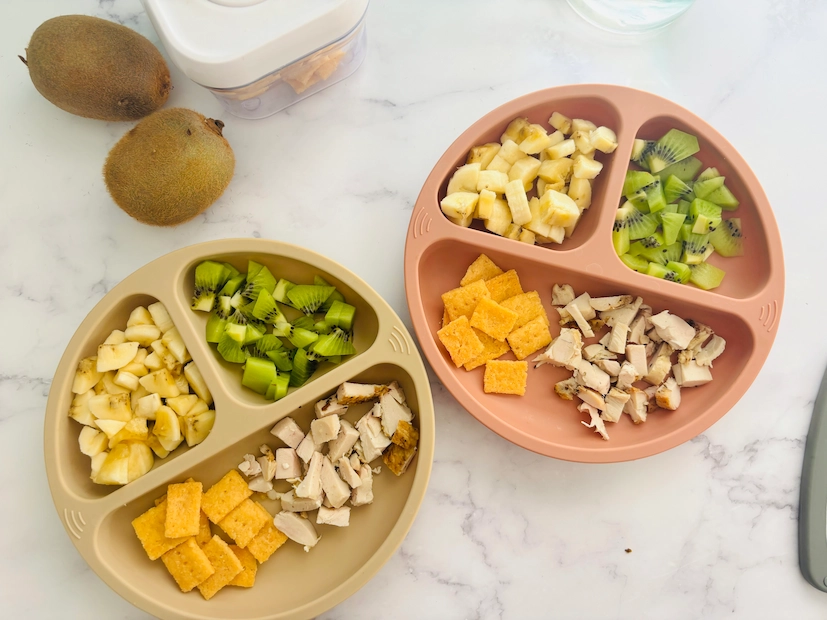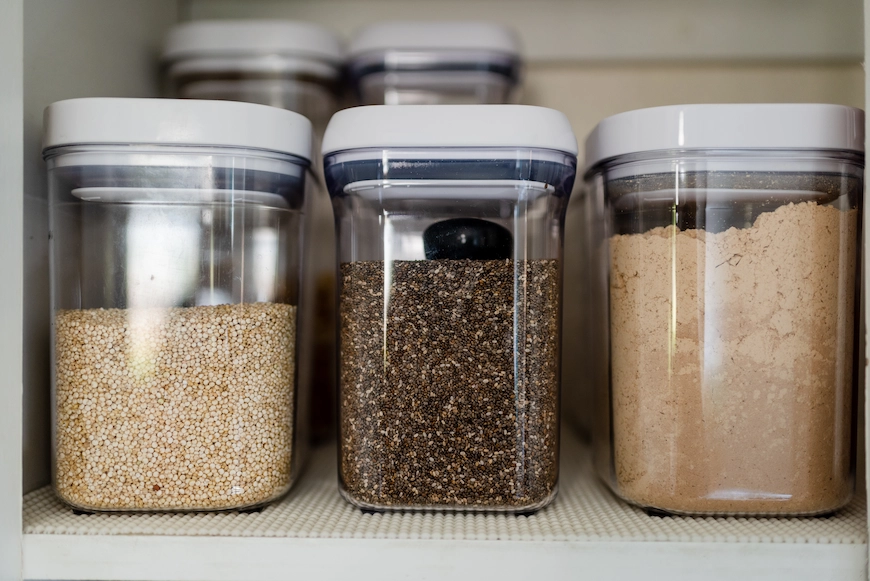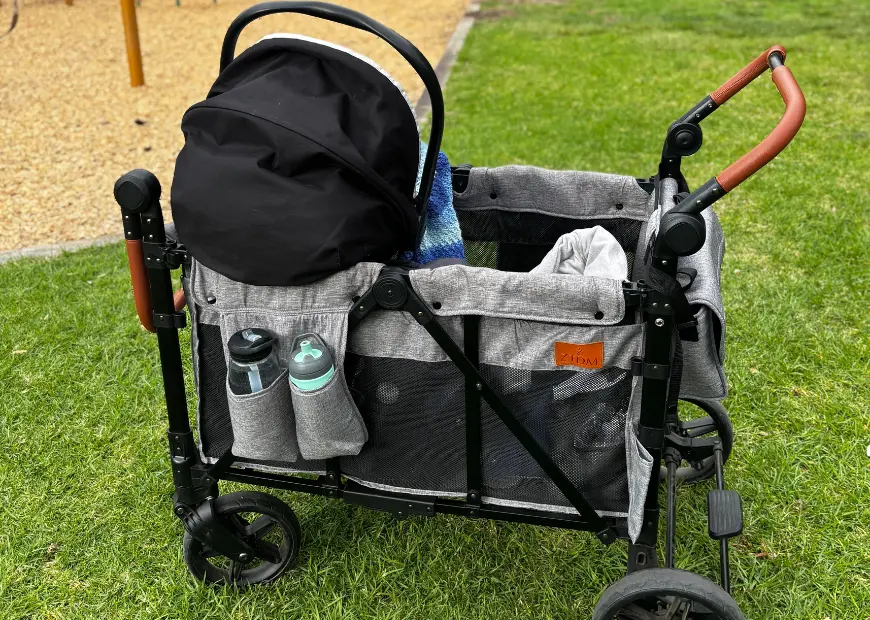This post contains affiliate links. If a purchase is made by clicking on a link, I will get a small commission at no extra cost to you.
If you’re thinking - HELP! I am in uncharted territory with the toddler stage, you have come to the right place. Not that I am an expert, but I have learned some things along the way that might be beneficial to you.
Our twins just turned two in September. I never liked when I would hear parents say “just wait for the terrible twos stage.” First off, I try to stay away from negative talk like that because it creates an ultimatum where my brain thinks “oh gosh, for the next twelve months and potentially beyond my toddlers are going to be extremely difficult.” When in reality, yes there are hours, days, weeks of difficult behavior, but that doesn’t mean my life has to be one hot mess. Kids are kids, and no matter what stage they are in, there are going to be challenges. Reframing is a great tool to help process toddler behaviors that are overwhelming. For example, when a toddler screams for what seems no reason, try to figure out the why. I can notice my toddler scream, and observe that he or she couldn’t put on their shoe, or a toy puzzle is stuck and understand that they are frustrated and don’t quite know how to speak up that they need help, or put the task down for a moment and come back to it later.
5 Practical Ways to Navigate the Toddler Stage
1. Take a Deep Breath, Mama
My mom always told me for the baby stage if you can make it through the first year you are set! I laugh now and tell her the first year with twins was way easier than the 12month + stage. As simple as it seems, taking a deep breath and telling yourself “I am a good mama”. Can do wonders. it’s not just about inhaling air – it’s about creating a tiny pause in the middle of the chaos. There are moments where I get so angry or frustrated because my home seems so out of control or I can’t handle another meltdown, I just need 2-5 minutes to “recharge”. I make sure my toddlers are in a safe area, and I go in the bathroom and lock the door just to have a moment to breathe. The short recharge can help in those mayday moments, but I strongly encourage you to capitalize on moments where you can truly fill your cup.
Here are ways to recharge, refill, and refresh yourself:
- Get some fresh air. Fresh air—whether it’s a walk around the block or sitting on the porch—can calm your nervous system and lift your mood.
- Prioritize rest. A 20-minute nap or simply lying down with your eyes closed while your toddler watches a short show can make a huge difference.
- Hydrate + nourish. Keep a water bottle nearby and have easy, energizing snacks (nuts, fruit, protein bars) prepped for when you’re running low.
- Morning moments of quiet. Even thirty minutes before everyone wakes up to sip coffee, pray, journal, or just breathe sets a peaceful tone for the rest of your day.
- Have an adult conversation. Call a friend, text another mom, or plan a playdate that’s just as much for you as for your toddler.
- Plan something just for you. A solo Target run, a hot shower without interruptions, or time for a creative hobby can refill your joy tank.
2. Control What You Can
As I have grown in my faith, I have realized more and more there is not much that I can control. Well praise Jesus for that! It feels good to surrender control to Him. I can’t control that my toddlers have a meltdown, or have a hard time listening, but there are things that I can control. For example, our toddlers from the time they started walking, they loved opening up our drawers and cabinets and pulling everything out. At first it was cute and funny, then quickly it was not. Solution? Cabinet and drawer locks. I was tired of vacuuming up dirt on our tile floor from them taking it out of our plant pots. Solution? I removed the potted plants that were reachable for them. I was tired of having them fight over certain toys. Solution? We bought two of the same toys. Granted we can’t do this for all the toys, that would get expensive! And also trying to teach 1 and 2 year olds about the concept of sharing is going to be a battle for a while.
Give yourself grace. I know this can be very difficult for us mamas who are overachievers or perfectionists. Mamahood is messy and there are lots of emotions from toddlers to parents. Embrace the imperfections and try to roll with it.
3. Keep Inventory on Toys
Toddlers get overstimulated easily – and bored just as fast. Having a few small bins of toys, puzzles, or sensory items you rotate weekly keeps things fresh without constant clutter. The Minimal Mom teaches that kids don’t need tons of toys—when they have less, they play better together and get more creative. I wholeheartedly agree with this. Sometimes I am confounded that there are toys everywhere on the floor in our living room, yet our twins are more interested in taking the cushions off the couch or taking spatulas out from the kitchen drawers. Less is more!
This year we welcomed our third baby to our family. I remember about half way through the pregnancy I was getting completely overwhelmed physically/emotionally with the pregnancy and caring for twin toddlers. The house seemed to be in a constant stage of chaos – a mix of their toys and our stuff strewn around in every room. I spoke with a friend who also has twin toddlers the same age as ours, but she has more experience under her belt because she has two older kids. She told me to pull back some toys, put them out of reach on a shelf. Did this make a huge difference! I kept close inventory on their toys by getting rid of toys they no longer played with and focused on the favorite toys. Then I would rotate the toys after a few days.
4. Create a Game Plan
You’ve probably heard the saying, “Failing to plan is planning to fail.” And if you’re anything like me, you’ve experienced it firsthand – I’ve been there a million and one times. When I randomly tackle cleaning, scroll endlessly on my phone, go to bed too late, and don’t even think about planning for the next day, how can I possibly expect things to go smoothly?
It’s so easy to get caught up in the chaos of life, especially when you’re no longer living solo, where time is your own. Now, I’ve got a partner, responsibilities, and little ones who need my attention. The reality is that time management becomes critical—no longer optional. This is where creating a game plan comes in.
A game plan doesn’t mean a strict, rigid schedule that stresses you out at every turn. It’s about having a flexible but intentional approach to your day. It’s about knowing the general direction you want to go, even if you don’t have every minute mapped out.
So, what does this look like in practical terms?
- Create a simple meal plan for the week. You don’t need to have gourmet meals planned out for every day, but knowing what’s on the menu for dinner or what snacks you can prepare in advance can save you time, reduce stress, and keep you on track.
- Decide on a morning or afternoon routine with your toddlers. This could be something as simple as a 30-minute outdoor walk or a few activities to get them moving and engaged. Having this planned will give both you and your kids a sense of structure and calm, instead of scrambling for what to do next.
- Practice low-grade tidying every day. It doesn’t need to be a deep clean every single day, but staying on top of dishes, picking up toys, or straightening up the main living areas can make your home feel more manageable and less overwhelming.
5. Less Screen Time Please
We live in a culture that relies heavily on devices. Phones, laptops, tablets, and TVs aren’t inherently evil – they can be useful tools – but they can cause real harm if we’re not mindful. I’ve noticed, especially in public places, how common it’s become for parents to hand a screen to their child at the grocery store or a restaurant just to keep them calm, entertained, or just be on good behavior. I completely understand why—it often feels like the only way to make it through a meal or get errands done without a meltdown.
When I used to babysit, I noticed a pattern: children who were allowed unlimited screen time often had a harder time playing creatively or enjoying outdoor activities. They’d grow restless without the constant stimulation a screen provides. It’s not because they’re “bad” kids—it’s because young children simply don’t have the ability to regulate themselves or set healthy limits. That’s something they learn from us.
What I’ve come to realize is that our babies and kids don’t really need the flashing lights or rapid-fire visuals to be happy. They need us. They need our presence, our attention, and our calm. Reading books together, playing pretend, going outside, or simply spending time side by side offers so much more than entertainment—it builds connection. Reading helps develop their speech, imagination, and emotional closeness. It gives them a sense of security that no screen can replace.
When we step back and set gentle boundaries around screens, we’re not depriving our kids of fun—we’re giving them something far better: the chance to grow, imagine, and connect in the real world. Ginny Yurich from 1000 hours outside, talks about the importance of getting our children outside and the benefits they experience by not being inside all day.
Well Mama, thank you for visiting. Please subscribe for more content and I wish you the very best with your little ones. God bless!









.webp)




.webp)